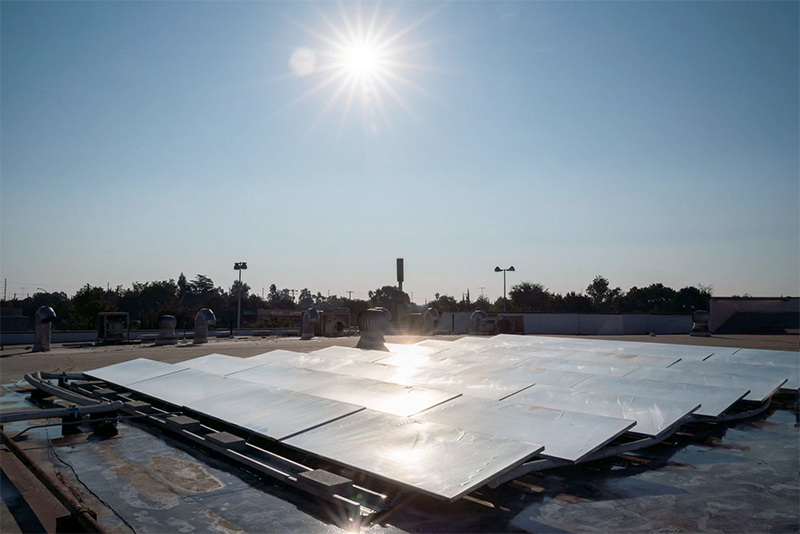Washington Post: Bringing the Chill of the Cosmos to a Warming Planet

SkyCool panels send heat to the sky and pull down cooling from space. They’re used to help keep refrigerators cool, reducing the amount of electricity they need, at Grocery Outlet in Stockton, Calif.
The Washington Post recently featured Aaswath Raman, a UCLA Samueli assistant professor of materials science and engineering, and his research using natural radiative cooling to lower temperature without generating greenhouse gas emissions that plague our ecosystem.
The advance leverages a natural phenomenon once harnessed by people in North Africa, India and Iran to make ice.
“Working with colleagues, he has developed a thin, mirror-like film engineered to maximize radiative cooling on a molecular level. The film sends heat into space while absorbing almost no radiation, lowering the temperature of objects by more than 10 degrees, even in the midday sun. It can help cool pipes and panels — like a booster rocket for refrigerators and cooling systems. Incorporated into buildings, it may even replace air conditioning. And it requires no electricity, no special fuel — just a clear day and a view of the sky.
‘It sounds improbable, Raman acknowledged. ‘But the science is real.’
Generations after people learned to make ice in the desert, he hopes that same science can help us survive in a rapidly warming world.”
The full article is available at The Washington Post website. A subscription may be required.
Raman, who received a Sloan Fellowship for his research in 2019, has also been featured for his innovative work on advance cooling materials in The New York Times, and UCLA Magazine.
